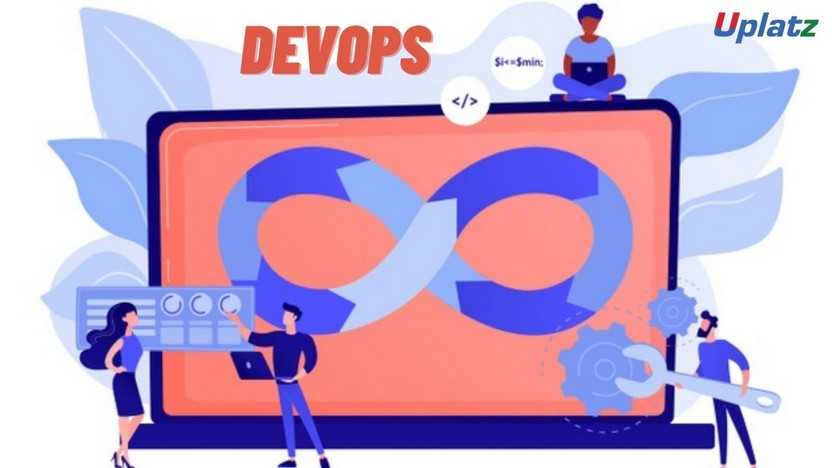Overview Course - Log4j
Efficient Logging with Log4j: From Basics to Best Practices. Learn loggers, appenders, layouts, log4j features and advantages & disadvantages of log4J View Course Curriculum
Price Match Guarantee
Full Lifetime Access
Access on any Device
Technical Support
Secure Checkout
Course Completion Certificate
View Course Curriculum
Price Match Guarantee
Full Lifetime Access
Access on any Device
Technical Support
Secure Checkout
Course Completion Certificate
 82% Started a new career
Enroll Now
82% Started a new career
Enroll Now
-
 83% Got a pay increase and promotion
83% Got a pay increase and promotion
Students also bought -
-

- Log4j
- 5 Hours
- GBP 12
- 74 Learners
-

- DevOps
- 20 Hours
- GBP 12
- 1677 Learners
-

- Career Path - DevOps Engineer
- 100 Hours
- GBP 32
- 372 Learners

This is an overview course on Log4j while the complete detailed-level Log4j course is available at -
https://training.uplatz.com/online-it-course.php?id=log4j-352
Log4j is a logging library for Java, developed by the Apache Software Foundation. It is part of the Apache Logging Services project and is used for generating log messages from Java applications. Logging is a critical aspect of software development and maintenance because it provides insights into the application’s behavior and helps in diagnosing issues.
1. Architecture Overview
Log4j follows a modular design, allowing flexibility and customization. Its architecture is built around three main components:
a)Loggers
b)Appenders
c)Layouts
2. Loggers
Loggers are responsible for capturing logging information. Each logger is associated with a specific name, often reflecting the class or module from which the log messages originate. Loggers are organized in a hierarchical manner, inheriting properties from their ancestors.
a)Root Logger: The top-level logger that acts as the ancestor of all other loggers. If no explicit logger is defined, the root logger is used.
b)Child Loggers: Loggers defined within specific classes or packages, inheriting properties from their parent loggers unless overridden.
Loggers can be configured to capture messages of various severity levels:
a)TRACE: Finer-grained informational events than DEBUG.
b)DEBUG: Informational events useful for debugging.
c)INFO: Informational messages highlighting the progress of the application.
d)WARN: Potentially harmful situations.
e)ERROR: Error events that might still allow the application to continue running.
f)FATAL: Severe error events leading to application abort.
3. Appenders
Appenders are responsible for outputting the log messages to different destinations, such as:
a)ConsoleAppender: Outputs logs to the console (standard output).
b)FileAppender: Writes logs to a file.
c)SocketAppender: Sends logs to a remote server using sockets.
d)JDBCAppender: Stores logs in a database via JDBC.
e)RollingFileAppender: Writes logs to files and rolls over files based on size or date.
Each appender can be configured with specific properties to customize its behavior.
4. Layouts
Layouts determine the format of the log messages. They define how the logging information should be presented. Common layouts include:
a)PatternLayout: Uses conversion patterns to format log messages (e.g., including date, thread name, log level, logger name, message).
b)HTMLLayout: Formats log messages as HTML.
c)XMLLayout: Formats log messages as XML.
d)JsonLayout: Formats log messages in JSON format.
Uplatz provides the extensive Log4j course to help you become a successful data engineer / cloud engineer / solutions architect / software developer / software testing especialist. You will be awarded a Course Completion Certificate by Uplatz at the end of the course.
Course/Topic - Log4j overview - all lectures
-
Lecture 1 - Introduction to Log4j
The objective of this Log4j course is to provide learners with a comprehensive understanding of the Log4j logging framework, enabling them to effectively implement and manage logging in Java applications. Participants will learn to configure Log4j for various logging levels, appenders, and layouts, as well as to integrate it seamlessly into their projects for enhanced monitoring and debugging. By the end of the course, learners will be proficient in leveraging Log4j to produce clear, organized logs, diagnose issues efficiently, and maintain robust application logging practices.
Key Objectives:
1).Understand the fundamentals of logging: Learn the importance of logging in software development and how Log4j facilitates it.
2).Master Log4j configuration: Gain expertise in configuring Log4j for different logging levels, output formats, and destinations.
3).Implement logging in Java applications: Integrate Log4j seamlessly into your Java projects to capture relevant application logs.
4).Utilize advanced Log4j features: Explore powerful features like log filtering, rolling file appenders, and custom log formatters.
5).Troubleshoot common Log4j issues: Learn how to diagnose and resolve common logging problems effectively.
6).Best practices for logging: Discover industry-standard best practices to optimize logging for performance and maintainability.
Log4j – course curriculum
a).Introduction to Log4j
b).Log4j Components and Implementation
c).Working with Log4j Properties
The Log4j Certification ensures you know planning, production and measurement techniques needed to stand out from the competition.
Log4j is used by developers to keep track of what happens in their software applications or online services. It's basically a huge journal of the activity of a system or application. This activity is called 'logging' and it's used by developers to keep an eye out for problems for users.
Log4j allows logged messages to contain format strings that reference external information through the Java Naming and Directory Interface (JNDI). This allows information to be remotely retrieved across a variety of protocols, including the Lightweight Directory Access Protocol (LDAP).
Threat and vulnerability management can discover vulnerable Log4j libraries, including Log4j files and other files containing Log4j, packaged into Uber-JAR files. This capability is supported on Windows 10, Windows 11, Windows Server 2019, and Windows Server 2022.
Uplatz online training guarantees the participants to successfully go through the Log4j Certification provided by Uplatz. Uplatz provides appropriate teaching and expertise training to equip the participants for implementing the learnt concepts in an organization.
Course Completion Certificate will be awarded by Uplatz upon successful completion of the Log4j online course.
The Log4j draws an average salary of $125,000 per year depending on their knowledge and hands-on experience.
Microsoft rolled out a new Log4j dashboard for threat and vulnerability management in the Microsoft 365 Defender portal for Windows 10 and 11, Windows Server, and Linux systems. This system aims to help customers find and fix files, software and devices affected by Log4j vulnerabilities.
Note that salaries are generally higher at large companies rather than small ones. Your salary will also differ based on the market you work in.
a).Java Developer.
b).Software Development.
c).Software Engineer Development.
Q1: What is Log4j, and why is it used in Java applications?
Ans: Log4j is a Java-based logging utility that provides a reliable, fast, and flexible logging framework for Java applications. It allows developers to log messages at different levels (e.g., INFO, DEBUG, ERROR) and to configure the logging output format and destination (e.g., console, file, database). It is used to monitor application behavior, troubleshoot issues, and keep track of events during runtime.
Q2: What are the main components of Log4j?
Ans: The main components of Log4j include:
1).Logger: The core component responsible for logging messages. Each logger is associated with a specific name and can be configured to log messages at different levels.
2).Appender: The component responsible for outputting the log messages to various destinations, such as files, console, or network sockets.
3).Layout: Defines the format of the log messages. Common layouts include PatternLayout, XMLLayout, and HTMLLayout.
4).LoggerRepository: Manages the loggers and their configurations. In Log4j 2.x, this is replaced by Configuration and Loggers.
Q3: How do you configure Log4j for a Java application?
Ans: Log4j can be configured using an XML or properties file. Here is an example of a basic configuration in XML format:
log4j.xml:
xml
Copy code
<Configuration>
<Appenders>
<Console name="Console" target="SYSTEM_OUT">
<PatternLayout pattern="%d{yyyy-MM-dd HH:mm:ss} %-5level %logger{36} - %msg%n"/>
</Console>
<File name="FileAppender" fileName="app.log">
<PatternLayout pattern="%d{yyyy-MM-dd HH:mm:ss} %-5level %logger{36} - %msg%n"/>
</File>
</Appenders>
<Loggers>
<Root level="debug">
<AppenderRef ref="Console"/>
<AppenderRef ref="FileAppender"/>
</Root>
</Loggers>
</Configuration>
Explanation: This configuration sets up a console and file appender with a specific layout. The Root logger is configured to log messages at the DEBUG level and above.
Q4:What are the different logging levels provided by Log4j, and what do they signify?
Ans: Log4j provides several logging levels, each indicating the severity or importance of the log message:
1) TRACE: The finest level of logging, used for detailed debugging.
2) DEBUG: Used for general debugging information.
3) INFO: Provides informational messages that highlight the progress of the application.
4) WARN: Indicates potential issues or warnings that might not be errors but could lead to problems.
5) ERROR: Logs errors that indicate issues affecting the application’s functionality.
6) FATAL: Indicates very severe errors that might lead to application termination.
Q5: How do you use Log4j in a Java class?
Ans: To use Log4j in a Java class, you need to:
1).Add the Log4j library to your project (e.g., using Maven or Gradle).
2).Create a logger instance and log messages at various levels.
Example Java Class:
java
Copy code
import org.apache.logging.log4j.LogManager;
import org.apache.logging.log4j.Logger;
public class MyClass {
private static final Logger logger = LogManager.getLogger(MyClass.class);
public static void main(String[] args) {
logger.info("This is an info message.");
logger.debug("This is a debug message.");
logger.error("This is an error message.");
}
}
Explanation: The LogManager.getLogger() method is used to create a logger instance, and different logging methods (info, debug, error) are used to log messages.
Q6: What is Log4j 2, and how does it differ from Log4j 1.x?
Ans: Log4j 2 is an improved version of the original Log4j framework, offering several enhancements over Log4j 1.x:
1).Asynchronous Logging: Log4j 2 supports asynchronous logging for better performance and reduced logging latency.
2).Configuration Flexibility: Log4j 2 supports configuration using XML, JSON, YAML, or properties files.
3).Improved API: Log4j 2 has a more powerful and flexible API, allowing for better performance and ease of use.
4).Plugin System: Log4j 2 introduces a plugin system for extensibility and customization.
5).Garbage-Free Logging: Log4j 2 aims to reduce garbage collection overhead with better memory management.
Q7: How can you implement asynchronous logging in Log4j 2?
Ans: Asynchronous logging can be enabled in Log4j 2 by using the AsyncAppender or AsyncLogger:
Example Configuration:
xml
Copy code
<Configuration>
<Appenders>
<Async name="AsyncAppender">
<AppenderRef ref="Console"/>
</Async>
<Console name="Console">
<PatternLayout pattern="%d{yyyy-MM-dd HH:mm:ss} %-5level %logger{36} - %msg%n"/>
</Console>
</Appenders>
<Loggers>
<Root level="info">
<AppenderRef ref="AsyncAppender"/>
</Root>
</Loggers>
</Configuration>
Explanation: The AsyncAppender wraps around another appender (e.g., Console) to provide asynchronous logging. You can also use AsyncLogger for asynchronous logging at the logger level.
Q8: How do you handle logging exceptions with Log4j?
Ans: To log exceptions with Log4j, you can pass the exception object to the logging methods:
Example:
java
Copy code
try {
// Code that may throw an exception
} catch (Exception e) {
logger.error("An error occurred", e);
}
Explanation: Passing the exception object to the error method (or any other logging level) will include the stack trace in the log output, providing valuable information for troubleshooting.
Q9: What are log appenders in Log4j, and how do they work?
Ans:Log appenders are components responsible for sending log messages to different destinations. Common appenders include:
1).ConsoleAppender: Outputs log messages to the console.
2).FileAppender: Writes log messages to a file.
3).RollingFileAppender: Writes log messages to a file with rollover functionality based on size or date.
4).SocketAppender: Sends log messages over a network socket.
Example Configuration:
xml
Copy code
<Appenders>
<File name="FileAppender" fileName="app.log">
<PatternLayout pattern="%d{yyyy-MM-dd HH:mm:ss} %-5level %logger{36} - %msg%n"/>
</File>
</Appenders>
Explanation: The FileAppender writes log messages to the specified file, using the defined layout for formatting.
Q10: How do you set up different logging levels for different loggers in Log4j?
Ans: You can configure different logging levels for different loggers by specifying them in the configuration file:
Example Configuration:
xml
Copy code
<Loggers>
<Logger name="com.example.DebugLogger" level="debug">
<AppenderRef ref="Console"/>
</Logger>
<Logger name="com.example.InfoLogger" level="info">
<AppenderRef ref="FileAppender"/>
</Logger>
<Root level="warn">
<AppenderRef ref="Console"/>
</Root>
</Loggers>
Explanation: This configuration sets up two custom loggers with different levels and appenders, while the root logger has a default level of WARN.









